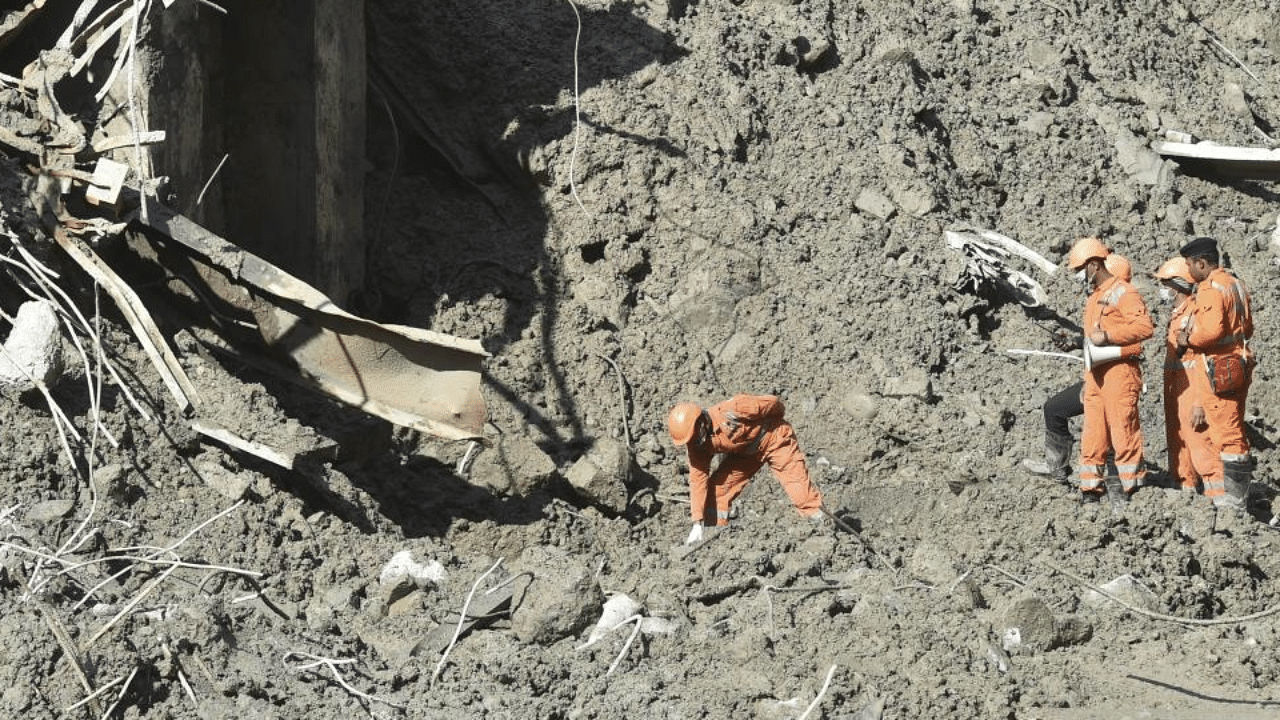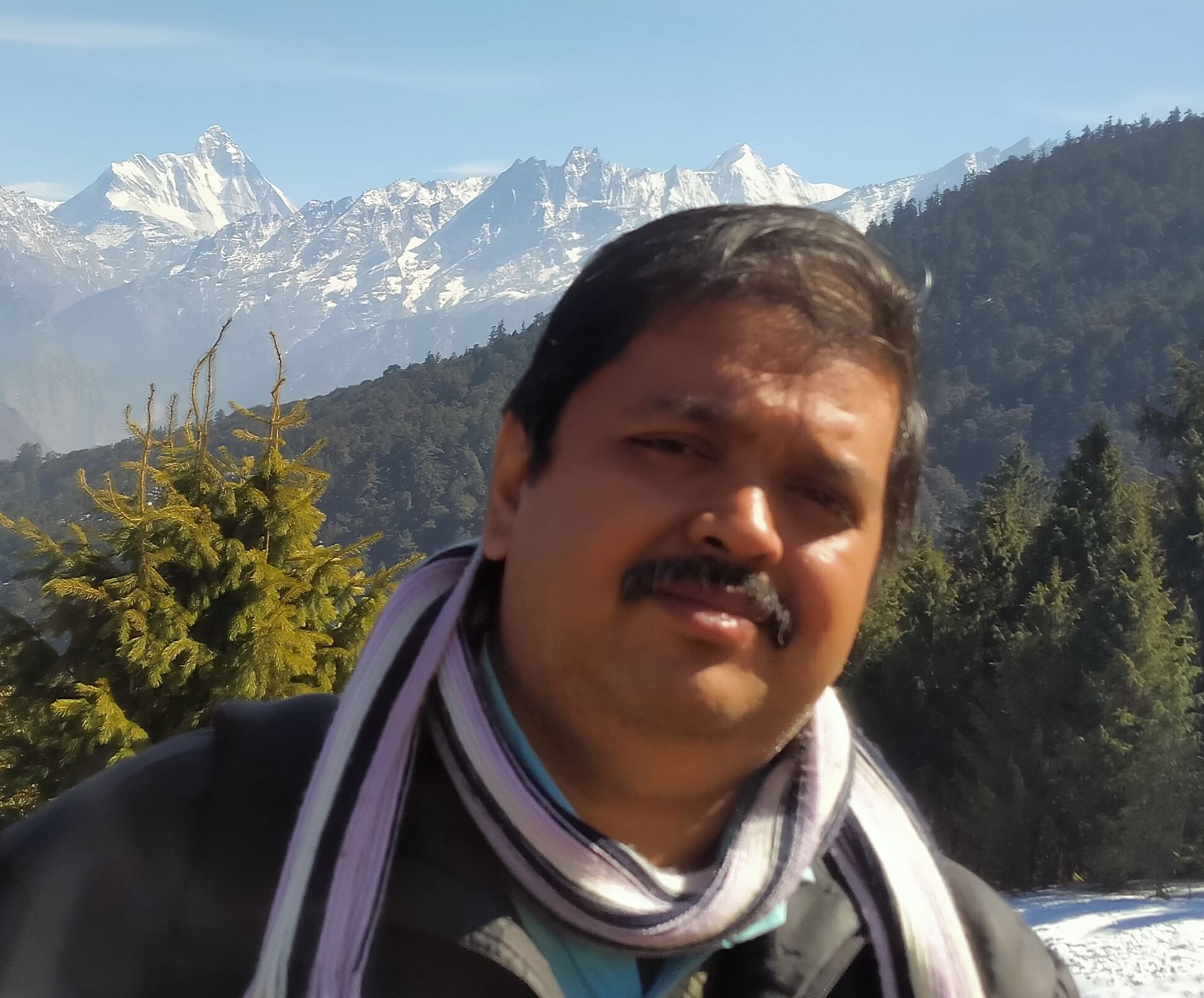
Aparna Kumar, Deputy Inspector General of the Indo-Tibetan Border Police (ITBP), who hails from Shivamogga, Karnataka is the rare mountaineer who has scaled the tallest peaks on all seven continents of the world. But perhaps her finest moment came when she led at the rescue operations at Tapovan and Raini, where the glacial floods in the Rishiganga destroyed two hydel power plants and washed away more than 200 people. “The area around the dam was beautiful, it’s completely vanished,” she tells DH’s Sagar Kulkarni.
What is the status of the rescue operations?
We are recovering bodies even from the tunnel and Raini village. We have progressed beyond 150 metres in taking out muck (from the tunnel). We had a smaller drilling machine earlier; now we are using a bigger one and we are moving inside the tunnel gradually.
Does ITBP have a dedicated rescue team?
Yes, we are the first responders to any such incident in the mountain regions. NDRF personnel had to be air-dropped. We are present right here in Joshimath. We have regional rescue centres in Gauchar and in Uttarkashi. In case of a disaster, we can reach in minutes. We do not have to take anyone’s permission to reach. No one has to tell us. It is our duty and responsibility to reach wherever disasters occur.
What were the key challenges that you faced?
The ITBP is the first responder in the Himalayan region as per the National Disaster Management Act. When the battalion stationed at Joshimath heard the sound (of the glacial flood), they were alert. When they saw smoke and dust in the valley, they immediately got dressed up, gathered the equipment required for rescue operations and reached Raini village immediately.
A second-team had reached the NTPC site at Tapovan. The team at Raini village had reported that everything there had been submerged. The buildings that were there, the dam, the bridge – everything was destroyed. I had travelled on that bridge several times to reach my border outposts (BOP). It was a traumatic experience. The area around the dam was beautiful, it has now vanished completely.
We then called that team back to Tapovan as there were chances of finding survivors here. The rescuers, with help from onlookers, reached the silt flushing tunnel, which was blocked by a huge boulder. They broke the boulder using whatever implements they had at hand, removed the slush with their bare hands. We did not have any machines at that time. There was chaos everywhere and there was no way we could search for a machine. As mountaineers, we keep equipment such as carabiners, ropes, spade, axes. The rescuers cleared the debris with the spades, used axes to remove other obstructions and rescued 12 people using ropes.
That was one of the most miraculous rescues they had done. This was the quickest response. It was only a miracle that we could rescue those people. After that, we focused the rescue efforts on the tunnel where more than 30 people were trapped. We would have considered ourselves successful even if we could pull out one person alive from there. We were a bit unfortunate on that front. But I was really impressed with the quick response of the ITBP as first responders.
In Raini, the bridge had been washed away. Apart from the 13 villages that were washed away, I have 10 BOPs in Niti Valley, in Rimkhim and in Lapthal valley. These BOPs were cut off. I activated them and set up a control centre at Laata village and distributed relief material that was airdropped to all the villages at the higher altitudes. The men are really working very hard despite being cut off. We do winter dumping for the BOPs. They have dry rations that can last for about three to four months.
We have also asked the BOPs to provide dry rations to people who are going hungry. There is no supply of fresh vegetables as of now, but my BOPs can survive for two-three months with the dry rations they have, till the bridges are constructed. Villagers may have a problem if the district administration does not send rations and supplies.
There were multiple agencies involved in the rescue efforts – Army, NDRF, SDRF, in addition to local administration. Was coordination a challenge?
Coordination is not a challenge. The NDRF came in later, ITBP has battalions in Joshimath and Gauchar. For me, organising personnel for rescue work is not a big deal. In a matter of hours, personnel from Gauchar can reach Tapovan. In a matter of minutes, personnel from Joshimath could reach the site.
Beyond Raini village a dam had been cut off. ITBP has a company in Malari, so mobilising them was not difficult. SDRF, NDRF, Army everyone responded. In such situations, you all the personnel. There was chaos immediately after the disaster, but things were streamlined very soon and each one was performing their identified task. What ITBP did was exceptional. By saving 12 lives, they justified their existence at Joshimath. They responded quickly to the situation, and I hope they continue to do it in the future as well.
You also had to walk along riverbanks to look for survivors.
Initially, 2-3 teams were in Raini, some were in Malari, which was cut off. They had launched relief operations there. At the tunnel in Tapovan, everyone was there round-the-clock. Our Director General had directed us to look for survivors along the riverbed, those who had been washed away. We had our teams looking for survivors with binoculars.
What steps are being taken to re-connect the region which has lost connectivity?
The SDRF personnel had set up a zipline that can accommodate a two-seat trolley that can go across with food and other supplies. Building the bridge will take at least one month. An iron bridge using frames is being built and a concrete bridge will come up later.
